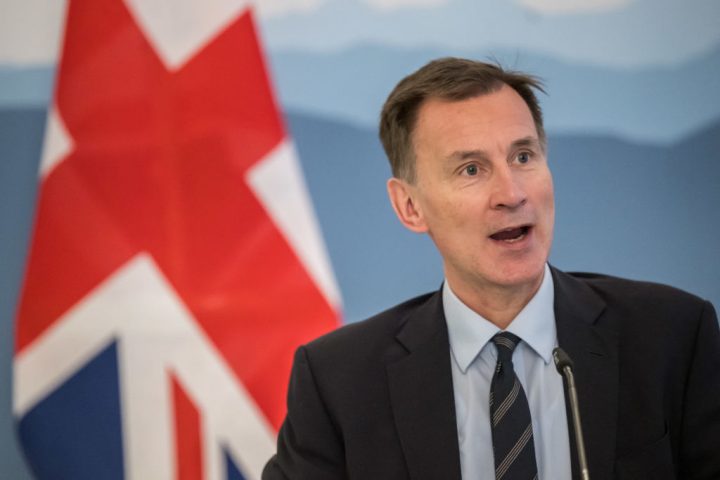On the face of it, this morning’s public sector finance update is good news. The government borrowed £7.8 billion in December last year. This is well below the £11 billion that economists had expected and almost half the £14 billion last forecast by the Office for Budget Responsibility (OBR). These are the lowest borrowing figures for December since the pandemic hit.
Once again, larger tax receipts helped fill in the gaps: up on the year to £61.1 billion – £3.5 billion higher than December 2022 – though on this occasion they notably undershot the OBR’s expectations by £1.8 billion, suggesting a minor slowdown. A large contributor to lower borrowing figures overall was a fall in debt servicing payments, which were £4 billion last month. This is a staggering £14.1 billion less than the previous year, and £5.5 billion less than the OBR had forecast for December 2023.
This is all good news for Jeremy Hunt, who promised at the weekend that tax cuts were coming in the March Budget. Borrowing less than expected over the past few months will increase the Chancellor’s scope to offer up another round of tax cuts. This time he is expected to target income tax, for which he will need between £6 billion and £7 billion for every penny he wants to take off. Capital Economics is forecasting this morning that the OBR will revise its 2025-26 borrowing estimates significantly, giving the Chancellor roughly £20 billion’s worth of fiscal headroom for his next round of tax cuts.
But will it be enough to really move the dial? Once again, some select good news doesn’t really reflect the bigger picture. Despite lower-than-expected borrowing figures, public sector net debt still sits at £2.69 trillion – or roughly 97.7 per cent of the country’s GDP. This is ‘1.9 percentage points higher than in December 2022 and remains at levels last seen in the early 1960s’. This doesn’t bode well for the government’s pledge to get the ‘debt falling’, nor does it suggest scope for a serious pivot on tax.
It seems that whatever the Chancellor announces in the upcoming Budget will once again be just on the edge of what is affordable, rather than an indication of a longer-term trajectory in which tax cuts aren’t just offered up before elections, but rather are presented as something sustainable. Similar to the problem of the debt burden still rising despite better December figures, the Chancellor will also have to grapple with the tax burden this March, which is still rising despite his £30 billion worth of tax cuts last Autumn.
Having quickly been called out for cutting taxes last November, when (thanks to frozen tax thresholds) the tax burden remained on track to rise to a post-war high, the government will be trying to design this Budget so that both specific taxes and the tax burden overall are falling. But that is an expensive offer, not least when ministers will be loath to announce any serious spending cuts ahead of the next election. Expect many of these trade-offs to be pushed into the next Parliament, where the trade-offs between tax cuts and more state spending will finally come to a head.







Comments